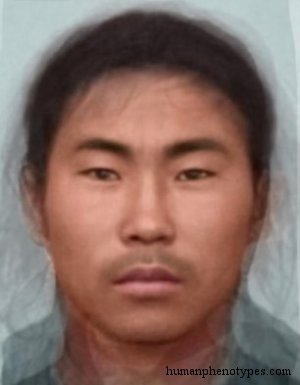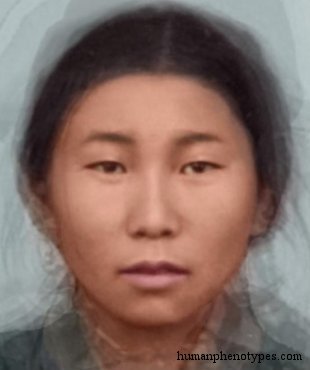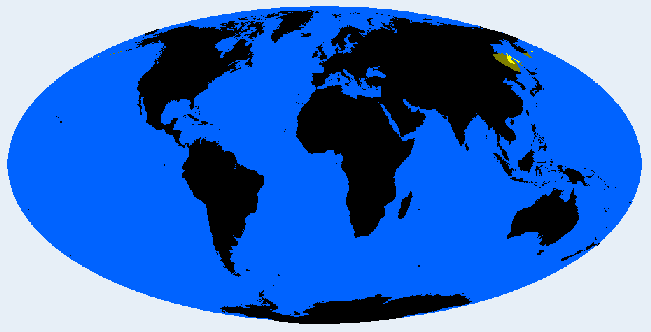Description:
Distinctive Tungid variety, probably split from neighbouring types at the end of the Paleolithic. Native to parts of the Sakhalin-Amur region. Typified by Nivkhs (Gilyaks), mixed in Ulchs, and rare in Orochs and Aleuts. Nivkh culture suffered heavily from Chinese and Cossack influence. The type is present only in a few thousand today.Physical Traits:
Light yellowish-brown skin with coarse straight to wavy, usually black hair and mostly dark eyes. Rather short, macroskelic, endomorph, sometimes ectomorph. Brachycephalic, orthocranic with a mildly leptorrhine, slightly prominent nose. The face is moderately flattened, broad with very protruding cheekbones. Mongoloid features and epicanthic folds very pronounced. Prognathy mild, body hair rather strong, eyebrows thick.Literature:
Montandon (1933) and Eickstedt (1934) regarded it a Maritime Mongoloid (Tungid) variety together with Aleutians. Biasutti (1967) placed it in Paleo Asiatic. Lated defined as the Amur-Sakhalin type, a Tungid (North Mongoloid) variety (Levin, 1963; Debets, 1974; Schwidetzky, 1974; Alexeev, 1979).






